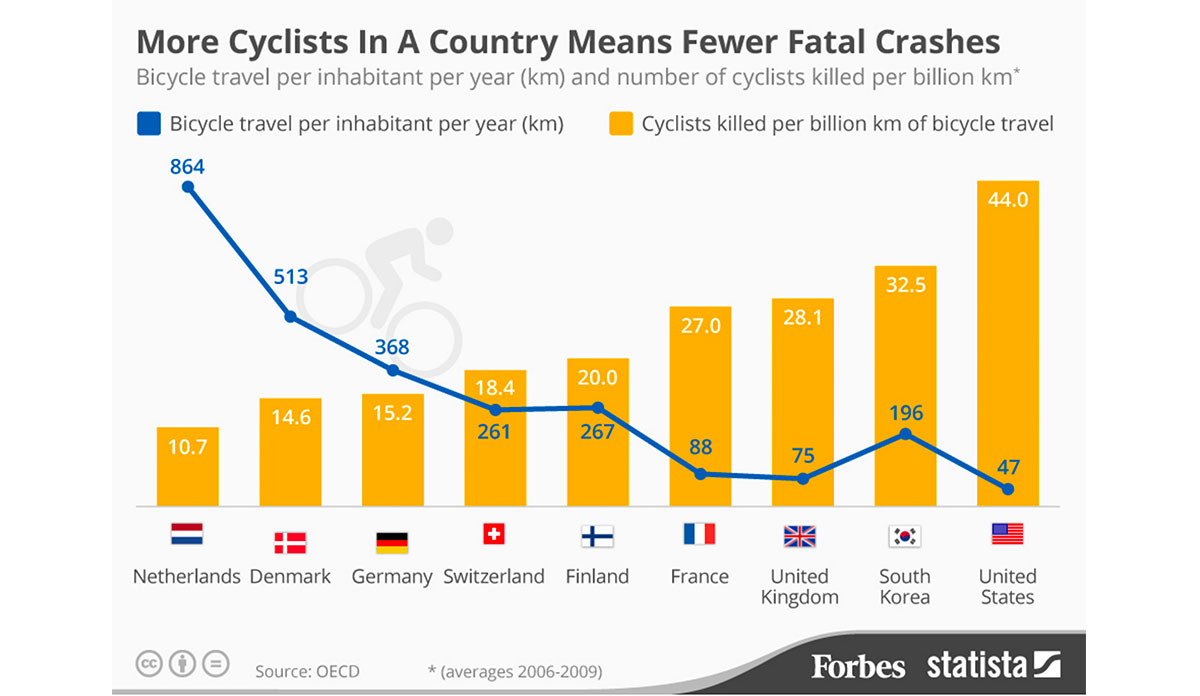Cycling for transportation offers many benefits, from increased fitness to a reduced gas bill and carbon footprint. However, it also carries risks. In the absence of dedicated bike infrastructure like bike paths and protected bike lanes, cyclists often share roadways with cars and trucks. It’s a combination that can be deadly. This is especially true in the United States, where a lack of infrastructure and a burgeoning cycling culture has lead to steadily increasing bike-related fatalities.
However, this graphic from Forbes, based on a report by the Organisation for Economic Co-operation and Development demonstrates an adage commonly referenced by cycling advocates: there is safety in numbers. The idea follows a simple logic: that if there are more cyclists on the road, drivers will be more likely to be aware of – and avoid – them. The connection is borne out by this study, which shows that countries like the Netherlands and Denmark – home to both robust cycling cultures and advanced cycling infrastructure – see far fewer deaths per billion kilometers of bicycle travel compared to the U.S. More robust research is needed to control for other factors such as cycling infrastructure, education programs, and traffic levels which could also affect the relative safety of cycling in different countries and communities. But this is compelling support for bike-friendly policies.
Databyte via Niall McCarthy, The More Cyclists In A Country, The Fewer Fatal Crashes – Report. Forbes.














